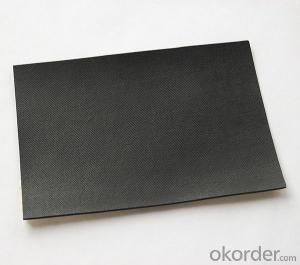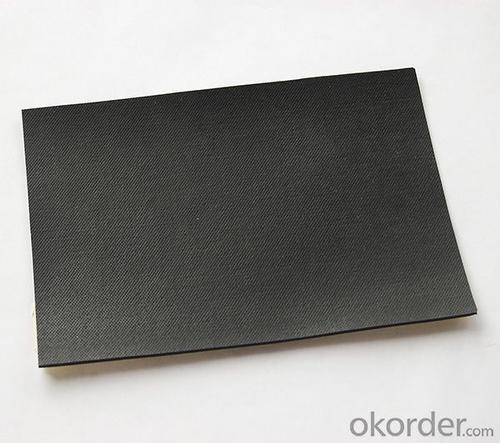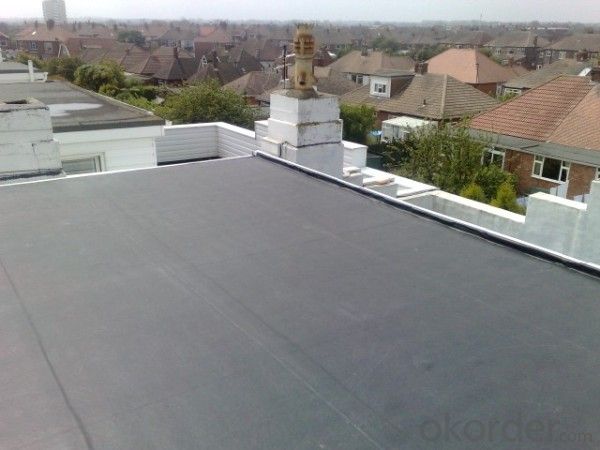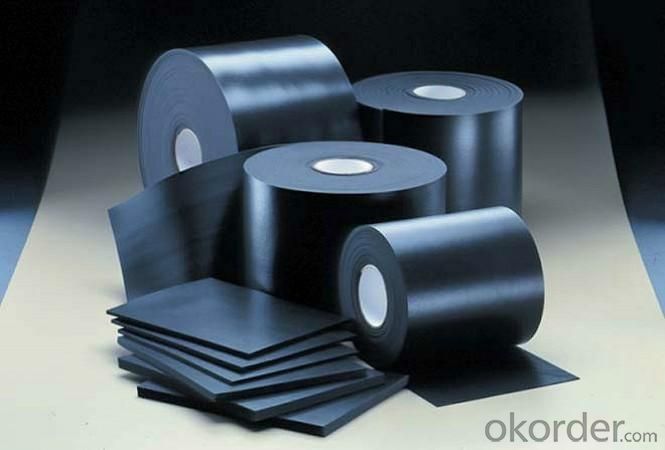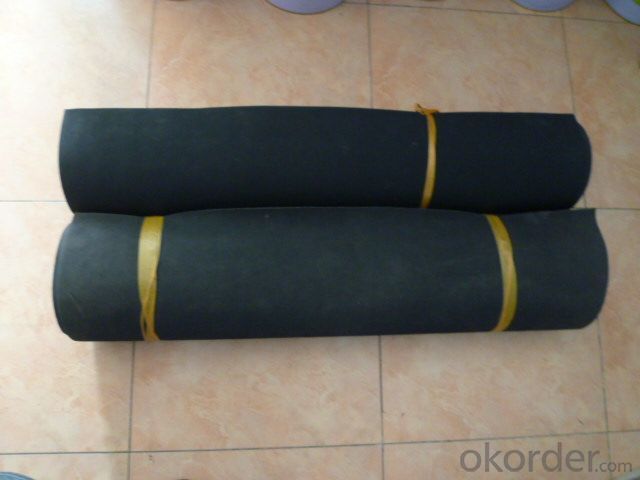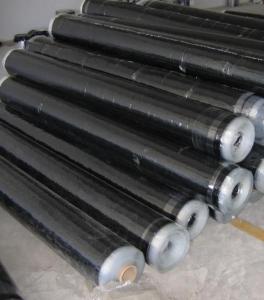EPDM Rubber Waterproof Membrane with 3m Width
- Loading Port:
- Shanghai
- Payment Terms:
- TT OR LC
- Min Order Qty:
- 50000 m²
- Supply Capability:
- 5000000 m²/month
OKorder Service Pledge
OKorder Financial Service
You Might Also Like
EPDM Rubber Waterproof Membrane with 3m Width
Description Of EPDM Rubber Waterproof Membrane with 3m Width:
This waterproof coiled material is of high elasticity with best performance among high polumer waterproof coiled material in the world.It is also the most typical one in the world.Waterproof coiled material made of ternary ethylene-propylene rubber is produced with the use of the most advanced contiuous extrusion and vulcanization technology and related equipments which are specially designed for production of such product.It is good in compactness,without bubble and performance difference in length and breadth,perfomances reach or exceed the demands of GB18173.1-2000 standard.
Main Features of EPDM Rubber Waterproof Membrane with 3m Width:
1.EPDM waterproof membrane for bridge engineering waterproof
2.EPDM waterproof membrane for water conservancy projects ,such as river bank,lake dam seepage.
3.EPDM waterproof membrane for the municipal engineering.
4.EPDM waterproof membrane for aquaculture.
Specifications of EPDM Rubber Waterproof Membrane with 3m Width:
| Number | Item | Unit | Value | |
| 1 | Size Variation | Thichness | % | ±10 |
| Width | % | ±1 | ||
| Length | % | Allowed negative | ||
| 2 | Breaking tensile strength at normal temperature | Mpa | ≥7.5 | |
| Breaking tensile strength at 70°C | Mpa | ≥2.3 | ||
| 3 | Breaking elongation at normal temperature | % | ≥450 | |
| Breaking elongation at -20°C | % | ≥200 | ||
| 4 | Tear strength | KN/m | ≥25 | |
| 5 | Impermeability(30min) | * | 0.3Mpa no leakage | |
| 6 | Bending at low tempreture | °C | ≤-40 | |
| 7 | Stretch tensor at heating | Elongate | mm | ≤2 |
| Shrink | mm | ≤4 | ||
| 8 | Air oven aging(80°C×168h) | Tensile strength at break retained | % | ≥80 |
| Elongation at break retained | % | ≥70 | ||
| 9 | Anti-alkali | Tensile strength at break retained | % | ≥80 |
| Elongation at break retained | % | ≥80 | ||
| 10 | Nuture weathing at manual simulation | Tensile strength at break retained | % | ≥80 |
| Elongation at break retained | % | ≥70 | ||
Applications of EPDM Rubber Waterproof Membrane with 3m Width:
Widely used in roofs, basement, toilet ,swimming pool, and all kinds of industry and civil building waterproofing, reservoir, vivicism, bridge, underground, tunnel and dam waterproofing ,especially to the keystone waterproofing projects which is durability, high corrosion resistance and easy deformation.
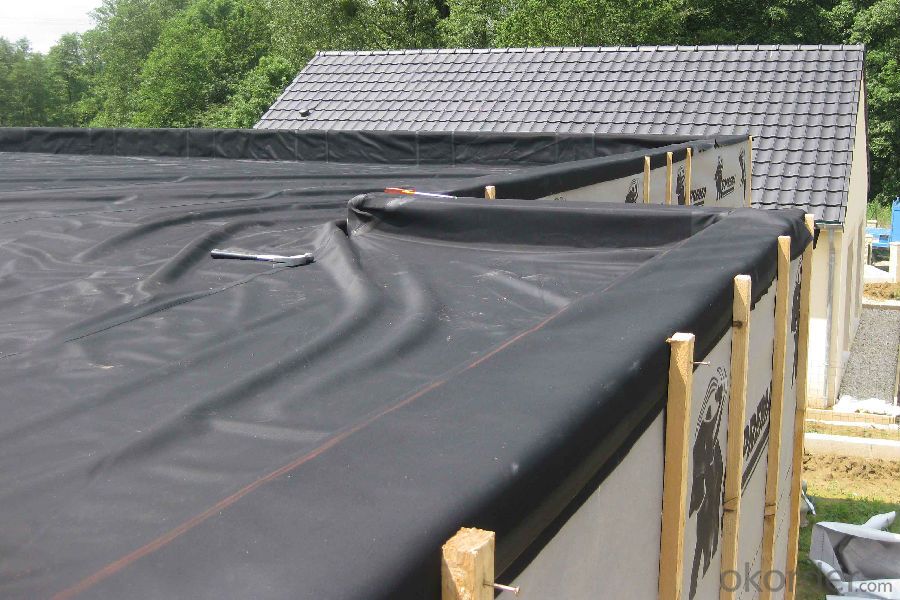
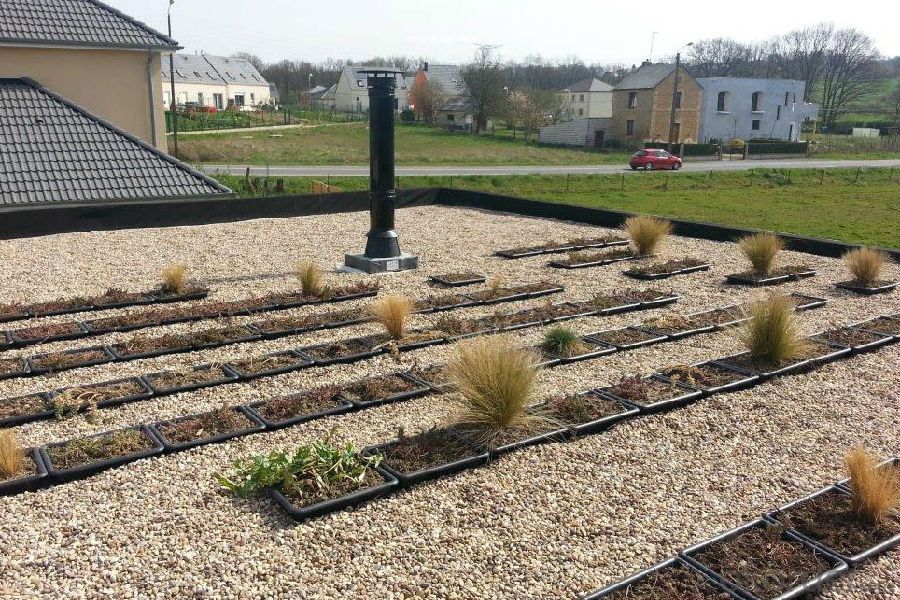
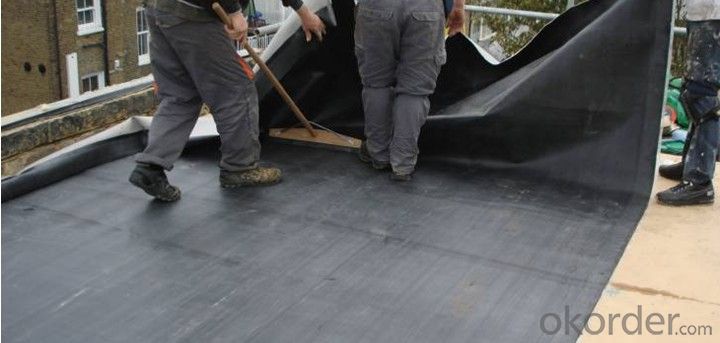
IMages of EPDM Rubber Waterproof Membrane with 3m Width:
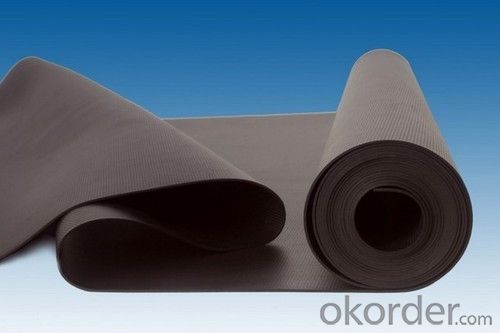
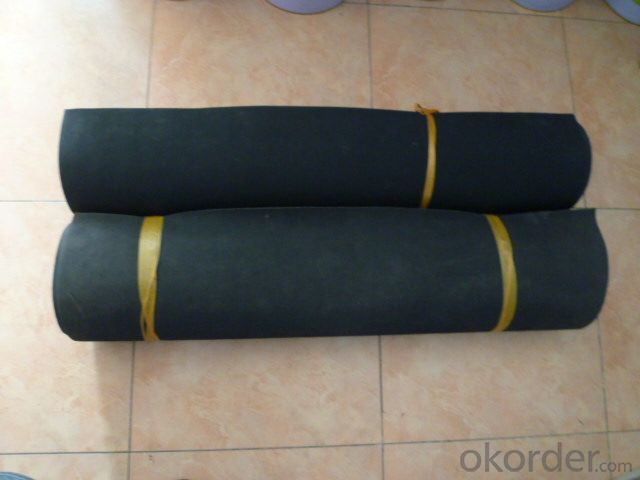
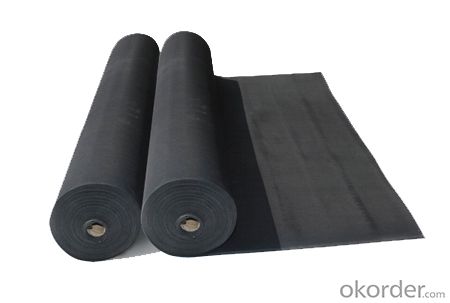
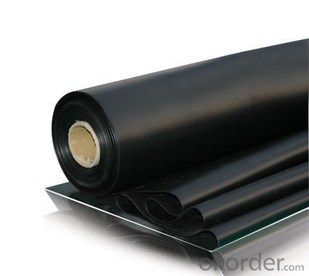
FAQ of EPDM Rubber Waterproof Membrane with 3m Width:
1. What are we supplying?
We are specialized in producing Colorful Asphalt Roof Shingle, SBS/APP modified bitumen waterproof membrane, Self adhesive bitumen waterproof membrane, PVC waterproofing membrane, EPDM rubber roofing membrane, Single Component Polyurethane Waterproof Coating, and Spray Polyurea Waterproof Coating
.
2. How Many years experience do we have?
We have been exported to more than 20 countries in the past 15 years.
3. How long do we usually reply your request?
We always reply our customer within 24 hours.
- Q: Can a waterproofing membrane be used for podium decks or plaza areas?
- Podium decks or plaza areas can benefit from the application of a waterproofing membrane. It is highly recommended to utilize this protective layer in order to safeguard the underlying structure from water-related harm. Given their exposure to the elements, podium decks and plaza areas are susceptible to water infiltration. By implementing a waterproofing membrane, water seepage into the lower layers can be effectively prevented, thus ensuring the long-lasting durability and structural integrity of the deck or plaza. Furthermore, this waterproofing membrane is also capable of shielding spaces beneath the deck or plaza, such as basements or parking garages, from potential water damage. Therefore, it is crucial to select a top-notch waterproofing membrane specifically designed for outdoor purposes, and to carefully adhere to the manufacturer's instructions regarding proper installation and maintenance.
- Q: Can a waterproofing membrane be used in conjunction with tile or stone installations?
- Yes, a waterproofing membrane can definitely be used in conjunction with tile or stone installations. In fact, it is highly recommended to use a waterproofing membrane in wet areas such as bathrooms, showers, and kitchen backsplashes to prevent water damage and moisture penetration. A waterproofing membrane acts as a barrier that prevents water from seeping through the tile or stone and reaching the underlying layers, such as the subfloor or wall. It helps to protect the structure and prolong the lifespan of the installation. There are various types of waterproofing membranes available, including liquid-applied membranes, sheet membranes, and fabric membranes. These membranes can be applied to the substrate before the tile or stone is installed, creating a waterproof layer that ensures the area remains dry and free from water-related issues. Using a waterproofing membrane not only provides protection against water damage but also helps to prevent the growth of mold and mildew, which can be harmful to both the installation and the health of the occupants. It is important to note that the proper installation of the waterproofing membrane is crucial for its effectiveness. It should be applied according to manufacturer guidelines and best practices to ensure a tight seal and complete coverage. Overall, incorporating a waterproofing membrane with tile or stone installations is a wise choice, as it enhances the durability and longevity of the project while providing peace of mind against potential water damage.
- Q: Can waterproofing membranes be applied over existing surfaces?
- Yes, waterproofing membranes can be applied over existing surfaces. In fact, this is a common practice in construction and renovation projects. Waterproofing membranes are designed to provide a protective barrier against water infiltration, and they can be applied over various surfaces such as concrete, wood, metal, or even other waterproofing systems. By applying a waterproofing membrane over an existing surface, it helps to prevent water damage, including leaks, mold growth, and structural deterioration. However, it is important to ensure that the existing surface is properly prepared and cleaned before the membrane application to achieve optimal adhesion and performance. Additionally, it is recommended to consult with a professional waterproofing contractor to determine the most suitable membrane type and installation method for the specific project requirements.
- Q: Does a waterproofing membrane provide any UV resistance?
- Yes, a waterproofing membrane can provide some degree of UV resistance. Many waterproofing membranes are designed to be used in outdoor applications where they will be exposed to sunlight. These membranes often incorporate UV stabilizers or additives that help to protect the membrane from the damaging effects of UV rays. However, it is important to note that the level of UV resistance provided by a waterproofing membrane can vary depending on the specific product and manufacturer. It is always recommended to consult the manufacturer's specifications and guidelines to determine the UV resistance capabilities of a particular waterproofing membrane.
- Q: Can a waterproofing membrane be used in conjunction with drainage systems?
- Yes, a waterproofing membrane can be used in conjunction with drainage systems. The membrane provides a barrier to prevent water penetration, while the drainage system helps to channel and remove any water that may accumulate. This combination ensures effective and comprehensive waterproofing for various applications such as basements, roofs, and underground structures.
- Q: Are waterproofing membranes suitable for below-grade applications?
- Waterproofing membranes are well-suited for below-grade applications, as they are specifically designed to prevent water infiltration into structures below ground level, such as basements, foundations, and retaining walls. These membranes are constructed using durable materials, capable of withstanding soil and water pressure, thus providing long-term protection against leaks and water damage. Typically, they are installed on the exterior side of below-grade structures to create a barrier that blocks water from permeating the walls or floors. Moreover, waterproofing membranes possess flexibility, allowing them to accommodate structural movements, ensuring their effectiveness even in challenging below-grade environments. In summary, waterproofing membranes serve as a dependable and efficient solution for safeguarding below-grade structures from water intrusion.
- Q: Where are waterproofing membranes commonly used?
- Waterproofing membranes are commonly used in a variety of applications to prevent water infiltration and protect structures from moisture damage. Some of the common areas where waterproofing membranes are used include: 1. Basements: Waterproofing membranes are extensively used in basements to prevent water seepage through foundation walls and floors. They create a barrier that keeps water out and helps maintain a dry and habitable space. 2. Roofs: Waterproofing membranes are widely used in roofing systems to protect buildings from rain, snow, and other elements. They are applied beneath the roofing materials and act as a barrier against water penetration, ensuring the structural integrity of the roof. 3. Bathrooms and wet areas: Waterproofing membranes are essential in bathrooms, showers, and other wet areas to prevent water from seeping into the walls and floors. They create a watertight seal that helps to avoid mold growth, water damage, and structural issues. 4. Balconies and terraces: Waterproofing membranes are commonly applied to balconies, terraces, and other outdoor areas to protect them from water damage and ensure durability. They provide a protective layer that keeps water from penetrating the surface and causing deterioration. 5. Swimming pools: Waterproofing membranes are extensively used in the construction of swimming pools to prevent water leakage. They are applied to the pool shell and provide a watertight seal, ensuring that the pool remains structurally sound and water-tight. 6. Tunnels and underground structures: Waterproofing membranes are used in tunnels and underground structures to protect them from groundwater seepage. They form a waterproof barrier that prevents water from infiltrating and causing damage to the structure. 7. Planter boxes and green roofs: Waterproofing membranes are commonly used in planter boxes and green roofs to prevent water from seeping into the building structure. They create a barrier that retains moisture within the planter or green roof while preventing water infiltration into the building. Overall, waterproofing membranes play a crucial role in various construction projects, ensuring the protection and longevity of structures by preventing water damage and moisture-related issues.
- Q: Can waterproofing membranes be used on shower walls?
- Yes, waterproofing membranes can be used on shower walls. These membranes are specifically designed to create a barrier against water, preventing leaks and protecting the underlying structure from moisture damage. Applying waterproofing membranes on shower walls is a common practice to ensure a watertight and durable shower enclosure.
- Q: Can a waterproofing membrane be used in basements?
- Yes, a waterproofing membrane can definitely be used in basements. In fact, it is highly recommended to use a waterproofing membrane in basements to protect against moisture intrusion and potential water damage. A waterproofing membrane is a thin layer of material that is applied to the external walls or floors of a basement to prevent water from seeping through. It acts as a barrier, effectively preventing water from entering the basement and keeping it dry. This is particularly important in areas where the water table is high, or in regions prone to heavy rainfall or flooding. By installing a waterproofing membrane, homeowners can greatly reduce the risk of water damage, mold growth, and other issues associated with excess moisture in the basement. It is important to note that proper installation and maintenance of the waterproofing membrane is crucial to ensure its effectiveness and longevity.
- Q: Can waterproofing membranes be used on loading docks?
- Yes, waterproofing membranes can be used on loading docks. Waterproofing membranes are designed to provide a protective barrier against water infiltration, making them suitable for various applications, including loading docks. By installing waterproofing membranes on loading docks, it helps prevent water damage and leakage into the underlying structure, protecting the integrity and durability of the dock. Additionally, waterproofing membranes can also help enhance safety by reducing the risk of slips and falls that can occur due to wet surfaces on loading docks.
Send your message to us
EPDM Rubber Waterproof Membrane with 3m Width
- Loading Port:
- Shanghai
- Payment Terms:
- TT OR LC
- Min Order Qty:
- 50000 m²
- Supply Capability:
- 5000000 m²/month
OKorder Service Pledge
OKorder Financial Service
Similar products
Hot products
Hot Searches
Related keywords
